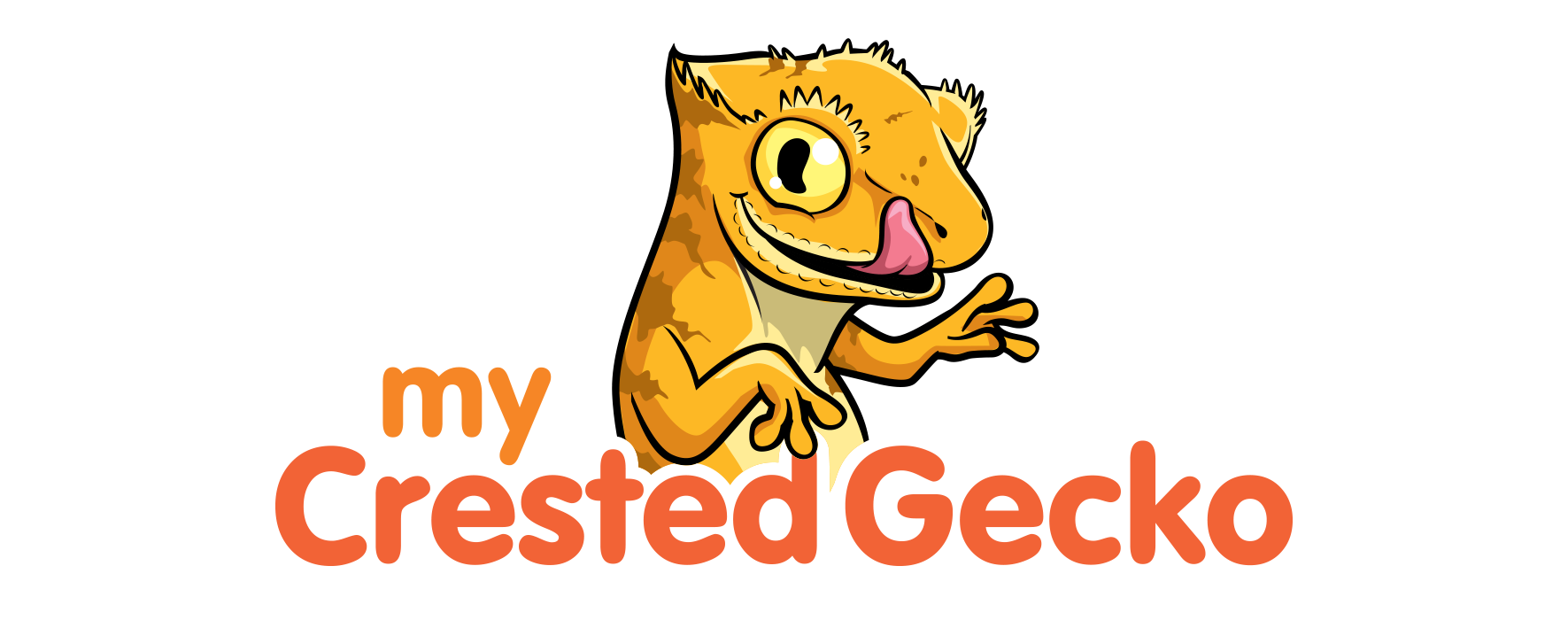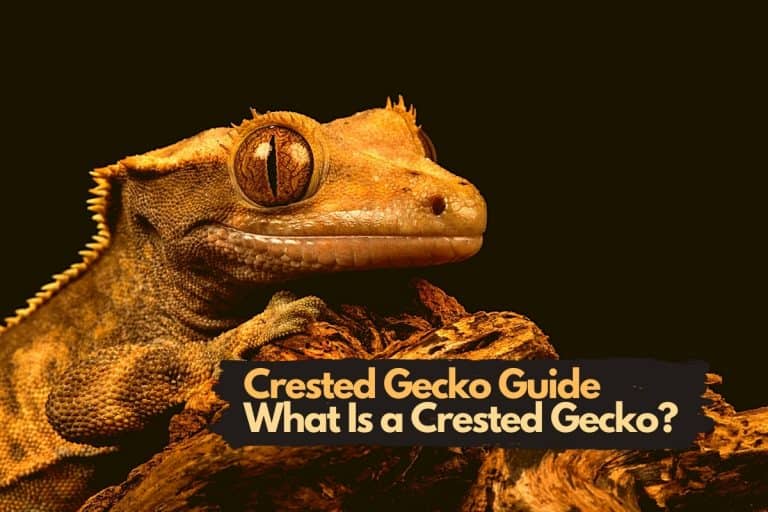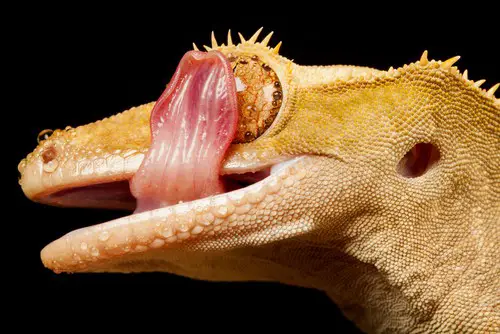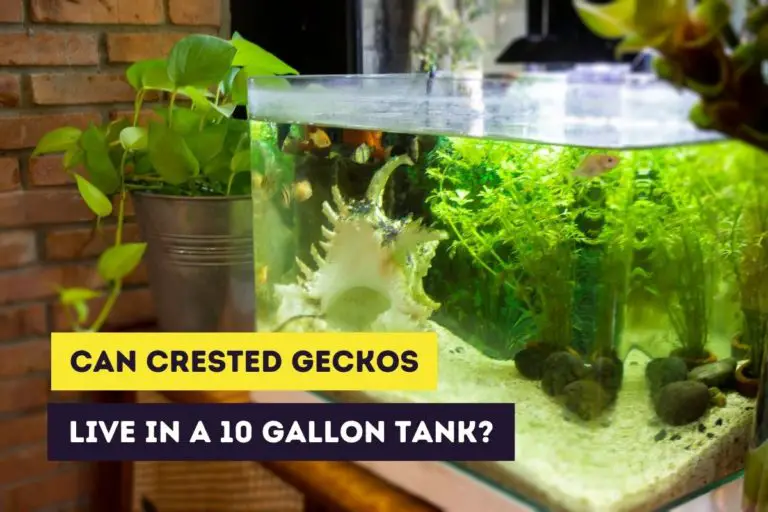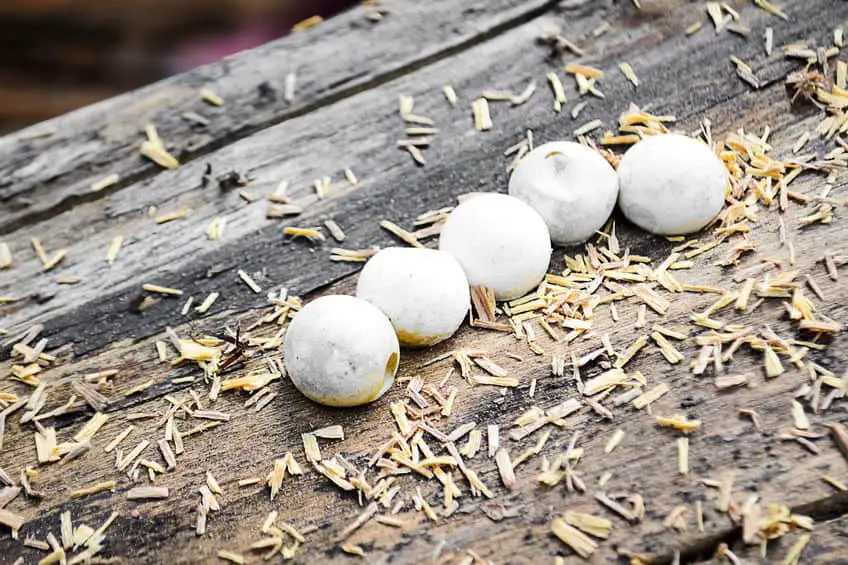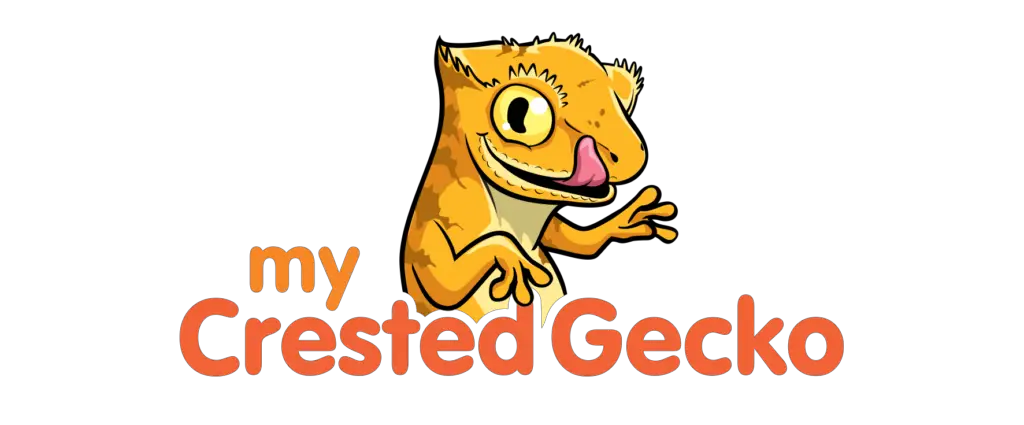Fruit Feeding Guide: Safe Fruit for Crested Geckos
Crested geckos eat a lot of fruits in the wild but most of the cresties in captivity are fed commercial diets. With a commercial diet consisting of a meal replacement powder, you don’t really need to add any fruit. But can you give fruit to a crested gecko in addition or is this a bad idea?
So can I give fruit to a crested gecko? Crested geckos can be fed soft fruits that are moderate to high in calcium and low in phosphorus. In captivity, fruits should be considered as treats for your crested gecko in addition to a crested gecko diet. Certain fruits, such as citrus fruits, will even harm your gecko’s health.
Since fruits are a part of a crested gecko’s diet in the wild, it’s possible to feed them fruit but it will be difficult to create a well-balanced diet. Furthermore, there are very good meal replacement powders available for crested geckos that contain most of the nutrients your gecko needs. This eliminates the need to give fruits yourself.
If you’re a new crested gecko owner, and even if you’re an experienced owner, I can only recommend you to stick with meal replacement powders (or granulated food), insects and give fruits as a treat.
If you’re interested in stickers or other products of crested geckos, you can always visit our Etsy Shop, which is called Artful Animalia. We currently only send stickers in the United States. If you’re interested in certain crested gecko-related products, don’t hesitate to contact us.
In this guide, you’ll be learning about the place of fruit in a crested gecko diet, what fruit can be fed and what fruit to avoid. More importantly, you’ll learn a bit about the calcium to phosphorus ratio which is necessary to know why certain fruit is more appropriate than others.
This site contains affiliate links to products we recommend and use ourselves. We may receive a commission for purchases that you make through these links. If you’re interested in learning more about our affiliate links, please visit our (affiliate) disclaimer.
Before You Give Fruit to Your Crested Gecko
The crested gecko diet needs to be well-balanced to provide your crested gecko with the right nutrients so he or she stays healthy. So, before you go feeding your crested gecko a piece of fruit you’ll need to learn a little bit more about:
- the calcium-to-phosphorus ratio (Ca:P ratio)
- the level of oxalic acid
The calcium to phosphorus ratio
Crested geckos need calcium to stay healthy and to prevent the development of the metabolic bone disease. It’s even more important for hatchlings and juveniles that are growing up. They need calcium for their skeletal development. Gravid females also need extra calcium because the calcium is needed in the process of the formation of eggshells.
In fact, the importance of calcium isn’t unique to (crested) geckos and is important for a lot of animals, including ourselves. It’s essential for the density of the bones. Caring for a crested gecko is caring for its health and one of the most important things to consider is the calcium absorption and retention.
Calcium to phosphorus homeostasis
An important process in the absorption and retention of calcium is calcium and phosphorus homeostasis. Calcium and phosphorus are two opposites: when calcium levels raise the phosphate levels are lowered and when the phosphate levels rise, the calcium levels drop.
Research has shown that good calcium to phosphorus ratio (Ca:P) is between 1:1 and 2:1. For crested geckos, it’s recommended to have a calcium to phosphorus ratio of 2:1 or better.
Calculating the calcium to phosphorus ratio
The Ca:P ratio can be described as a percentage but is more often described in terms of [number]:1 or 1:[number], where the 1 is the mineral that’s the lowest of the two. To calculate the calcium to phosphorus ratio this way you’ll need to bring back the lowest number to 1. So, the ratio is calculated by dividing the largest number by the lowest number.
Example 1
| Calcium | 60 mg | 60/30=2 |
| Phosphorus | 30 mg | 30/30=1 |
| Ca:P ratio | 2:1 |
Example 2
| Calcium | 10 mg | 10/10=1 |
| Phosphorus | 40 mg | 40/10=4 |
| Ca:P ratio | 1:4 |
Oxalic acids
Oxalic acid is a compound that’s found naturally in living organisms such as vegetables and fruits. It can be sometimes tasted in food when the amount of oxalic acid is very high. Textbook examples of plants that have a level of high oxalic acid are rhubarbs, star fruit, and spinach.
Oxalic acid is associated with the inhibition of calcium and the formation of kidney stones in humans. Crested geckos also need to avoid eating food that has a high level of oxalic acid. The compound will bound with minerals such as magnesium and calcium and form oxalates (tiny rectangular crystals).
Since calcium is essential for crested geckos, it’s recommended to stay away from foods that have a medium level of oxalic acid and to avoid foods with a high level of oxalic acid altogether.
Fruit in a Crested Gecko Diet
Safe fruits for crested geckos
Most fruits are not known to have a high level of calcium but do contain a lot of phosphorus. This obviously leads to a moderate or low Ca:P ratios in most fruits. If you want to create a well-balanced diet for your crested gecko in captivity that’s based on fruit you’ll have to be very careful.
Fruits with a high or moderate Ca:P ratio can be fed more often than fruits with a low Ca:P ratio. This doesn’t mean that you shouldn’t give fruit that has a low Ca:P ratio. You should only feed it less, for example only as a treat, or mix it up with fruits that have a high or moderate ratio.
Fruits with a high Ca:P ratio
Only a small amount of fruits have a high enough Ca:P ratio to fit in a crested gecko diet. The following fruits have a Ca:P ratio of 2:1 or better:
- papaya
- fig
- prickly pear
- raspberries
- orange
Fruits with a moderate Ca:P ratio
Most fruits have a moderate Ca:P ratio that’s around 1:1. The following fruits have a Ca:P ratio between 1.5:1 and 1:2:
- berries such as blueberries, blackberries, and strawberries
- grapes
- apples
- pears
- melons
- watermelons
- cherries
Fruits with a low Ca:P ratio
Most fruits have a moderate Ca:P ratio that’s around 1:1. The following fruits have a Ca:P ratio starting from 1:2:
- bananas
- peaches
- cantaloupes
- plums
- pumpkins
- pomegranates
- starfruits (but high oxalic acid concentration)
- passion fruits
Fruits to avoid or completely stay away from
Citrus fruits
There’s a general knowledge among crested gecko owners to avoid giving citrus fruits to your crested geckos. There are two main reasons for this, citrus fruits have high concentrations of:
- vitamin C: this vitamin might cause diarrhea.
- oxalic acid: citrus fruits have a higher concentration of oxalic acid. This acid impedes the absorption of calcium in the body as it binds with the calcium.
You should avoid giving citrus fruits like lemons, oranges, kiwis, pineapples, and grapefruits. Some gecko owners give citrus fruits to their crested geckos but only rarely because of the known effects of these kinds of fruits. Some crested geckos won’t even touch citrus fruits while others will enjoy them.
Fruit with a high concentration of oxalic acid
There are also (non-citrus) fruits that have a high concentration of oxalic acid. The best-known example is star fruit which also has a low Ca:P ratio and so isn’t a really good choice to give to your crested gecko. Rhubarb also has a high concentration of oxalic acid and should, for this reason, be avoided.
Avocado
Persin is a chemical (a fungicidal toxin)that is generally considered harmless to humans but can be toxic and dangerous for pets. Avocado fruit contains low amounts of persin. Research has shown that birds are very sensitive to persin and experience a lot of symptoms. A high dose can even cause death within 24 hours after consumption.
It’s likely that (small) pet reptiles, such as the crested gecko, would experience the same problems. Avocado fruit should for this reason never be given to crested geckos.
Feeding Fruit to Your Crested Gecko
How many times can I give fruit?
Fruit with a high and moderate Ca:P ratio or a mix of fruit that has a high and moderate Ca:P can be safely given to your crested gecko as part of a diet. There are some gecko owners that give their own balanced diet consisting of insects and fruits to their crested geckos. However, there exist enough good commercial diets that offer all the nutrients needed.
If you’re a new crested gecko owner and don’t have experience with balancing the diet of a crested gecko, your crested gecko will benefit the most from a meal replacement powder that has a high nutritional value and add fruit as a treat once or twice a month.
How many fruits do I give?
There isn’t a real determined amount of fruit you should or can give to your crested gecko. If you make a mashed fruit puree you can fill a shallow dish with the same amount as a normal meal replacement powder. If you give fruit as a treat you can give a piece of fruit and mash it up.
How to feed the fruit to your crested gecko?
Crested geckos can’t bite hard. They do have a lot of teeth but the teeth are small and a bite is a bit like a fish bite. This is also the reason why crested geckos can’t eat insects with exoskeletons that are too hard to bite and digest. When you feed fruit to your crested gecko you’ll have to make it suitable and edible for him.
Preparation of fruit
Preparing fruit for your gecko
Wash the fruit
The peel of fruit can contain a lot of bacteria and pesticides. If you take an apple, for example, you’ll first wash it if you want to eat it yourself. The same thing is, of course, necessary for your gecko. So always make sure to wash the fruit before you give it to your crested gecko. If you wash the fruit you can remove a lot of these bacteria and pesticides.
Remove the inedible and toxic parts
Fruits can also contain inedible or toxic parts. I’ll take the simple example of an apple. Apples are one of the most popular fruits in the world and people eat them every day around the world. But apple seeds contain a small quantity of cyanide. If you accidentally swallow a few seeds there normally isn’t a problem but in large quantities, it can kill you.
Now imagine giving the seeds to your crested gecko. Someone giving these seeds to a small pet is looking for trouble.
So you always have to make sure that you remove the inedible and toxic parts such as the seeds and pits.
Make the fruit soft and edible
Crested geckos don’t have a lot of “biting” power. So you have to make sure he can eat it.
You can either mash it up by placing the food in a food processor until it’s a fruit puree – a bit like baby food. Your crested gecko can easily lick this puree up with his tongue. No biting power required.
If you don’t have a food processor at home, you can cut the food into tiny bits. In this case, you have to make sure that the individual pieces of food are soft and are very tiny.
Related Questions
How many times can I give fruit to my crested gecko?
You should give fruit as a treat to your crested gecko. On average you could give your crested gecko fruit twice a month in combination with a crested gecko diet. If you give him too much fruit his diet can be imbalanced. There’s also a risk that if you give too much fruit that he’ll get a taste for it and won’t want to eat anything else.
Can I give fruit baby food to my crested gecko?
Baby food is not a good alternative to feeding fresh fruit to your gecko. This food doesn’t contain a lot of nutrients that are otherwise available in fruit. Baby food also contains additives and preservatives that aren’t healthy for your gecko. Although it may be a lot cheaper than buying fresh fruit it’s best to pay a little bit extra and give them the real stuff.
Want to Learn More?
If you want to learn more about crested geckos as pets, please read the following articles.
If you’re interested in getting crested geckos as pets you should also definitely read our article about baby and juvenile crested gecko care or (adult) crested gecko care.
